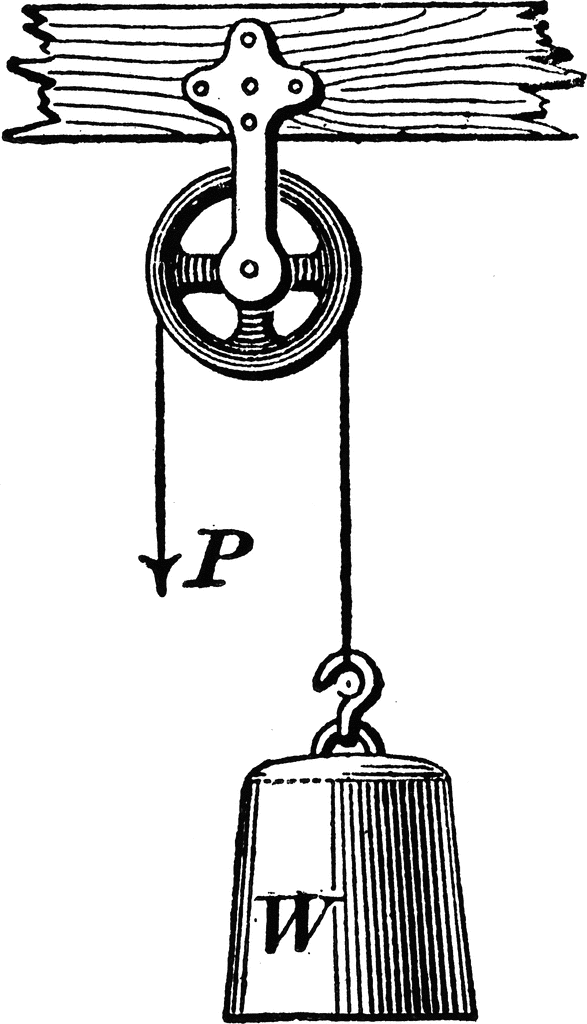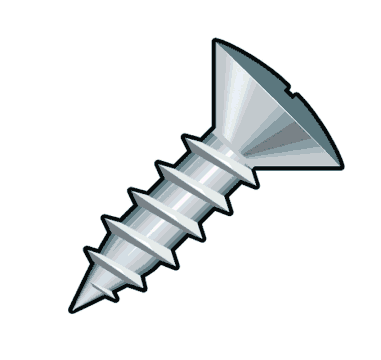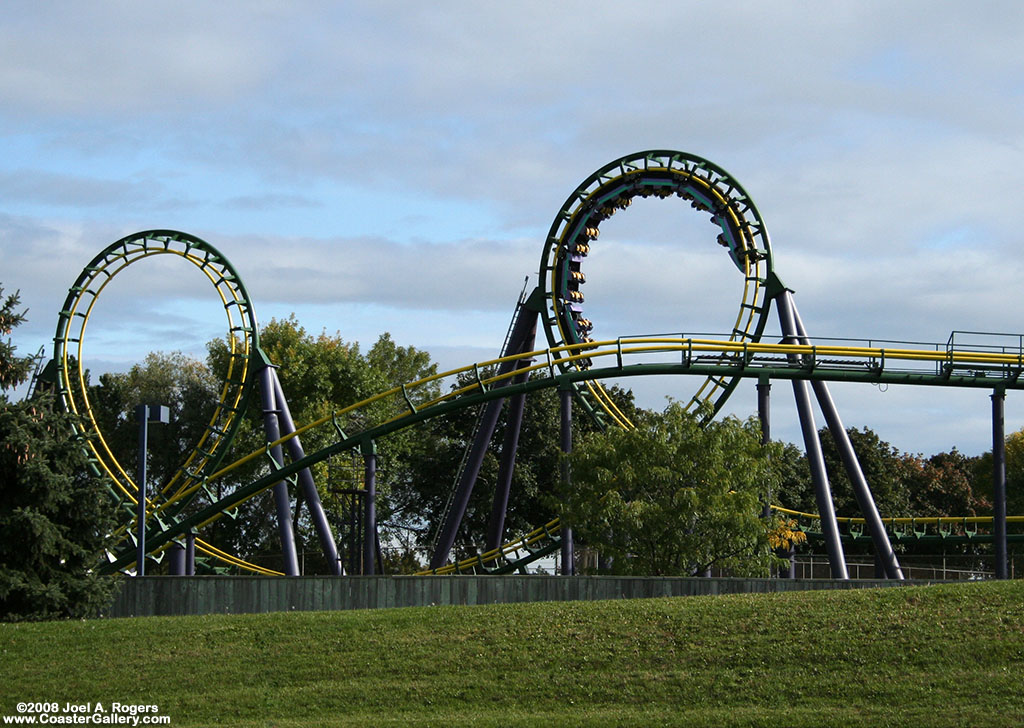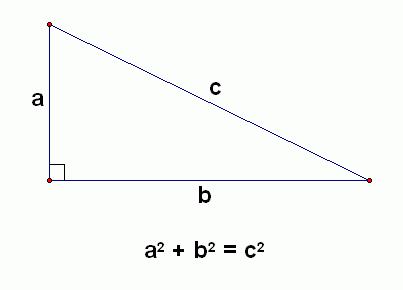What is energy? Energy is the droved from the Greek word "ἐνέργεια" - energeia which means "activity, operation", or from the word "ἐνεργός" - energos, " which means "active, working." There are many forms of energy such as:
- Thermal Energy (Heat)
- Chemical Energy
- Electrical Energy
- Radiant Energy
- Nuclear Energy
- Magnetic Energy
- Elastic Energy
- Sound Energy
- Mechanical Energy
- Light Energy
Thermal energy is associated with the loss or gain of energy that has to do with the change in temperature. Usually it is associated with any form of temperature except absolute zero since absolute zero has no energy whatsoever.
Chemical Energy has to with energy gained or loss given by the interaction between objects that form a chemical reaction.
Electrical Energy has to do with electric energy being converted into other forms of energy, most likely heat.
Radiant Energy is the energy of electromagnetic waves.
Nuclear Energy has to do with energy that is gained or loss through nuclear reactions.
Magnetic Energy is basically the change in electric energy, since it causes a magnetic field.
Elastic Energy is the energy or work needed to compress or expand a spring of some sort.
Sound Energy is the vibrations that occur when something moves, which we perceive as sound.
Light Energy is the energy that gives off light. It can usually be tied in to heat energy since light causes heat.
The Random Blog That Hopefully Has Something To Do With Physics
Saturday, December 11, 2010
Friday, December 3, 2010
Mission Possible: Create a Cannon?
 |
| imma firing ma cannon... |
From projectile motion, we learned that the range (x-distance) is:
From this equation, we know that the best angle should be 45 degrees. Why you ask? Well, since we want the maximum distance, every single factor must be maximized. If you calculate the sin of any angle, you will notice that when sin 90, it is equal to 1, its maximum. Therefore is we sub 45 into the equation for range, it will become sin 90, which is the maximum.
 |
| Do a barrel roll? |
Wednesday, December 1, 2010
Newton's 3 laws on getting hit by an apple...
 |
| A physicophical view point... (Get it?) |
 |
| If Yoshi does it, you know it has to be cool. |
- Inertia. Objects are lazy. So it wants to keep doing whatever it is doing unless there is an external force affected on it. Ex. A ball in space will keep flying, it doesn't want to stop because it is lazy.
- F=ma. Since force is positively related to acceleration, and mass is negatively related to acceleration, the equation F = ma can be formed (a = F/m is another form of zis)
- For every action force, there is an reaction that is equal in the completely opposite direction. When you punch a wall, the impact sends the force into the wall and into your fist. That is why you get hurt. :)
1) Equilibrium
 |
| This diagram increases the tension dramatically... |
When there is completely no motion, and everything is in a state of balance, this is called equilibrium. Usually, you are required to find the tension or the mass of the object. The vertical component of the system is usually Fg which is the force of gravity (also = mg). There is also usually the two tensions given. You should know that T1y + T2y = Fg since all forces should negate each other.
When dealing with these questions, it is essential for you to state your assumptions, this way, the reader will understand your viewpoints.
Assumptions:
- Friction = 0
- Acceleration = 0 (No motion)
- Total Force turns out to be 0
- (If there is tension then T1x = T2x)
- Set positive axis
- No air resistance
- No movement at all
- No movement at all
2) Incline
 |
| Ramping up the difficulty... |
When an object is at a state or rest or moving on a surface that is not horizontal. The only new component about this is the force of friction. As previously explored, the force of friction, if not given, is m(miu)Fn (Force of Normal) The usual components in the free body diagram is the gravity (Fg), the force of normal (or surface, = Fn) and friction (f).
When doing these sort of questions, don't forget to set a positive axis (Usually slanted along with the slope of the ramp).
Assumptions:
- Friction cannot = 0
- No air resistance
- Positive axis is usually in the direction of motion
- Fn = Fg, since the object on the ramp is not flying up or down
- Fn is perpendicular to the incline
- No movement in the y-direction
- No movement in the y-direction
3) Pulley
 |
| It really pulls you in.. |
When an object is pulling or being pulled by another object through tension, it is probably in a system involving a pulley. As you can see, the pulley should consist of a weight on both sides of the wheel thingy thing. Since both ends of the pulley are putting their masses on the string thing, the tension is the same. When doing pulley questions, don't forget to make 2 free body diagrams when required since there is acceleration and forces in different directions
Assumptions:
- No friction on the ropes or the pulley itself
- No air resistance
- a does not = 0
- T1 = T2
- a1 = a2
- Positive axis in the direction of acceleration
- 2 Free Body diagrams
- In some cases, no movement in the x or y - direction
- In some cases, no movement in the x or y - direction
4) Train
 |
| All on board the train to physics land.... What do you mean I should get a doctor.....? |
Assumptions:
- No friction, or in other cases yes friction
- No air resistance
- Cables or birds that hit the train have no mass
- Positive axis in the direction of acceleration
- Free-body diagrams according to the number of trains
- No movement in the y - direction
- Acceleration cannot = 0, but is constant
Don't forget, if you don't assume, you will get SCREWED!!!!!
 |
| BEWARE THE SCREW!!! |
Monday, November 8, 2010
My favorite, which roller coaster is? (With Yoda accent :D)
 |
| Where is Waldo? |
 |
| As you can see, the coaster is dragonly-epic :D |
Wednesday, November 3, 2010
Projectile Motion
 |
| You have reached, level 2! |
Previously, we have talked about vectors and the Big 5, which are equations that show the relation between distance, velocity and acceleration. Now, we will LEVEL UP! Projectile motion has to do with the application of vectors and the Big 5 in real life physics.
 |
| THE LEAPING CAT OF PHYSICS! |
Let's say a cat jumps off from a cliff, what are the variables and what are the givens? Since we learned about vectors, we can split up the motion into both a horizontal velocity, and a vertical velocity. The horizontal velocity is constant and has an acceleration of 0 IF there is no air resistance or air in general. Why? Because gravity only affects vertical velocity and nothing hinders it, therefore it is constant. As mentioned before, the vertical velocity will not be constant since there is an acceleration of 9.81m/s^2 (gravity) Also, before the cat jumps, it is at rest, therefore there is a vertical velocity of 0 at first. Assuming that the cat does not go up, and just sideways down the cliff, and that the givens are a horizontal velocity of 100m/s and it falls for 30 seconds before it hits the ground, how far did it fall and how fast was it going before it landed?
 |
| Ay is the vertical speed, Ax is the horizontal speed, and A is the velocity. |
The distance can be easily found by using the equation: D = vt where D is the distance, v is the horizontal velocity, and t is the time. Therefore D = 100m/s x 30 = 3000m. The cat jumped 3000m away. The final velocity is a harder to find though. First, we must find the final vertical speed. at = v2 - v1 is the equation that we will use. If we sub in a, t, and v1, we get 9.81 x 30 = v2 - 0, v2 = 294.3m/s. Now the final velocity can be found by using vector components and the Pythagorean theorem. The final velocity = sqrt(v2^2 + v1^2) = 310.6m/s = 311m/s. Therefore we now know how to find projectile motion. (The easy ones =D)
Thursday, October 28, 2010
How to add Vectors....
How to Add Vectors
 |
| Vectors... |
In order to understand how to add vectors, one must first understand, what is a vector? Vectors are comprised of two main characteristics, the magnitude and the direction. Normally, we mainly talk about the magnitude, which is the size of the vector. The size can be speed, distance, acceleration or any other unit. The direction however is not usually discussed about. The direction can be shown as a degree or as a compass direction. A vector can look like this. In order to add two vectors together, you must consider the 2 factors that were mentioned before, the magnitude and the direction. If you have two vectors that are facing the same direction, for example [E] (East), then you can add their magnitudes together and they are both facing the same direction. If they are facing the opposite directions, for example one of them is facing [E] and the other is facing [W], then you may change the one facing [W] to become – [E] since it is the reverse direction of [E]. After that is done, then adding them is a simple matter. A simple example is the picture on the right. The givens are A = 15m [E], B = 30m [W] and C = 10m [W]. Before we add them together, first we must change the direction of A. As you may recall, in order to invert the direction, we merely add the negative sign in front of the magnitude. Therefore A becomes -15m [W]. Now adding them together is very simple. A + B + C = -15 + 30 + 10 = 25m [E].
 You may wonder, what if they are not complete opposites, what if you had to add a vector facing north with a vector facing east? Well, that is no difficulty whatsoever my young paddlewans. Let’s explain with another example. The graph on the side states that B = 4m [N] while A = 3m [E]. Let’s test your memory; do you remember the Pythagorean Theorem? Well, by using the Pythagorean Theorem, you can find A + B. All you do is find the square root of the sum of “a”, which is A, squared and find the “b”, which is B, squared. You basically get: sqrt(A^2 + B^2) = sqrt(9 + 16) = 25m. WATCH OUT! You may think that you’re done but truth is... IT’S A TRAP! Remember how a vector MUST have both a magnitude and a direction, well, in order to complete A + B, you must find the direction. The direction can be found with trigonometry. First, you label the tail of A (The part of the arrow without the arrow tip) as the origin, then you label the head of B (The part with the arrow tip) as the final point. Now, you use trigonometry to find the angle. Since the tail of A is the origin, think of it on a graph as (0, 0). Therefore, from the graph you realize that A + B is in the positive quadrant.
You may wonder, what if they are not complete opposites, what if you had to add a vector facing north with a vector facing east? Well, that is no difficulty whatsoever my young paddlewans. Let’s explain with another example. The graph on the side states that B = 4m [N] while A = 3m [E]. Let’s test your memory; do you remember the Pythagorean Theorem? Well, by using the Pythagorean Theorem, you can find A + B. All you do is find the square root of the sum of “a”, which is A, squared and find the “b”, which is B, squared. You basically get: sqrt(A^2 + B^2) = sqrt(9 + 16) = 25m. WATCH OUT! You may think that you’re done but truth is... IT’S A TRAP! Remember how a vector MUST have both a magnitude and a direction, well, in order to complete A + B, you must find the direction. The direction can be found with trigonometry. First, you label the tail of A (The part of the arrow without the arrow tip) as the origin, then you label the head of B (The part with the arrow tip) as the final point. Now, you use trigonometry to find the angle. Since the tail of A is the origin, think of it on a graph as (0, 0). Therefore, from the graph you realize that A + B is in the positive quadrant.  |
| Pythagorean Theorem |
 Now find the trigonometry, more specifically tangent. Using tangent, we can find the angle that A + B forms with the y-axis, which becomes 36.7 degrees. With this, we can get A + B = 5 [N36.7E]
Now find the trigonometry, more specifically tangent. Using tangent, we can find the angle that A + B forms with the y-axis, which becomes 36.7 degrees. With this, we can get A + B = 5 [N36.7E]Calculating two vectors with diagonals may seem hard but they are actually very simple. Now that you know how to find a diagonal vector from two horizontal/vertical vectors, you just split up the diagonal vectors into a horizontal and a vertical vector, add the 4 different vectors together, find the angle and voila, that becomes your new vector.
Wednesday, October 20, 2010
How to derive the equation d = v2(delta)t - 1/2a(delta)t^2
Similar to the other equation, d = v1(delta)t + 1/2a(delta)t^2, the equation can be found from a velocity - time graph. First, you have the same graph with the same points. This time, you will find the same area except that you first find the area of a rectangle formed with v2 and (delta)t subtracted by the triangle above the trapezoid. The area of the rectangle is
Area1 = bh
Area1 = (v2)(delta)t
Now, the area of the triangle can be found with the equation Area2 = bh/2. The base of this equation is (delta)t like previously but the height is the difference between v2 and v1, which becomes v2 - v1. Therefore the equation becomes:
Area2 = 1/2(v2 - v1)(delta)t
Now, in order to find the area of the trapezoid, you must subtract the area of the triangle from the rectangle.Therefore, you get
Area = Area1 - Area 2
Area = v2(delta)t - 1/2(v2 - v1)(delta)t
Now label this equation ♦
Previously in class, we learned that acceleration can be derived from the slope of the velocity graph:
a (acceleration) = (v2-v1)/(delta)t
a(delta)t = (v2 - v1)
Now label this ♣
Now substitute ♣ into ♦
d(Area) = v2(delta)t - 1/2 (a(delta)t)(delta)t
d = v2(delta)t - 1/2a(delta)t^2
Thus you derived the equation d = v2(delta)t - 1/2a(delta)t^2.
Subscribe to:
Posts (Atom)


